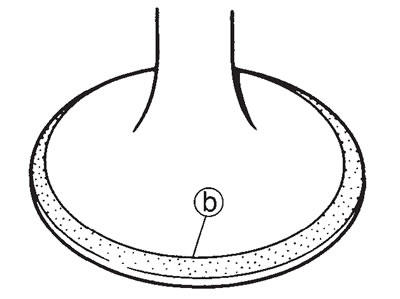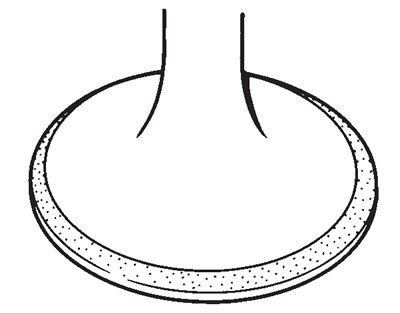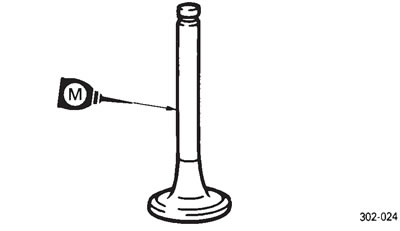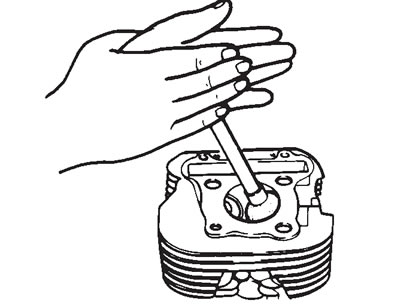1. Eliminate: carbon deposits (from the valve face and valve seat)
2. Check: valve seat
Pitting/wear → Replace the cylinder head.
3. Measure: valve seat width (a)
Out of specification → Replace the cylinder head.

Valve seat width limit:
- Intake: 1.8 mm
- Exhaust: 1.8 mm
a. Apply Mechanic's blueing dye (Dykem) (b) onto the valve face.

b. Install the valve into the cylinder head.
c. Press the valve through the valve guide and onto the valve seat to make a clear pattern.
d. Measure the valve seat width. Where the valve seat and valve face contacted one another, the blueing will have been removed.
4. Lap:
- valve face
- valve seat
Note: After replacing the cylinder head or replacing the valve and valve guide, the valve seat and valve face should be lapped.

a. Apply a coarse lapping compound to the valve face.
Caution! Do not let the lapping compound enter the gap between the valve stem and the valve guide.

b. Apply molybdenum disulfide oil onto the valve stem.
c. Install the valve into the cylinder head.
d. Turn the valve until the valve face and valve seat are evenly polished, then clean off all of the lapping compound.
Note: For the best lapping results, lightly tap the valve seat while rotating the valve back and forth between your hand.

e. Apply a fine lapping compound to the valve face and repeat the above steps.
f. After every lapping procedure, be sure to clean off all of the lapping compound from the valve face and valve seat.
g. Apply Mechanic's blueing dye (Dykem) onto the valve face.
h. Install the valve into the cylinder head.
i. Press the valve through the valve guide and onto the valve seat to make a clear impression.
j. Measure the valve seat width again. If the valve seat width is out of specification, reface and lap the valve seat.
